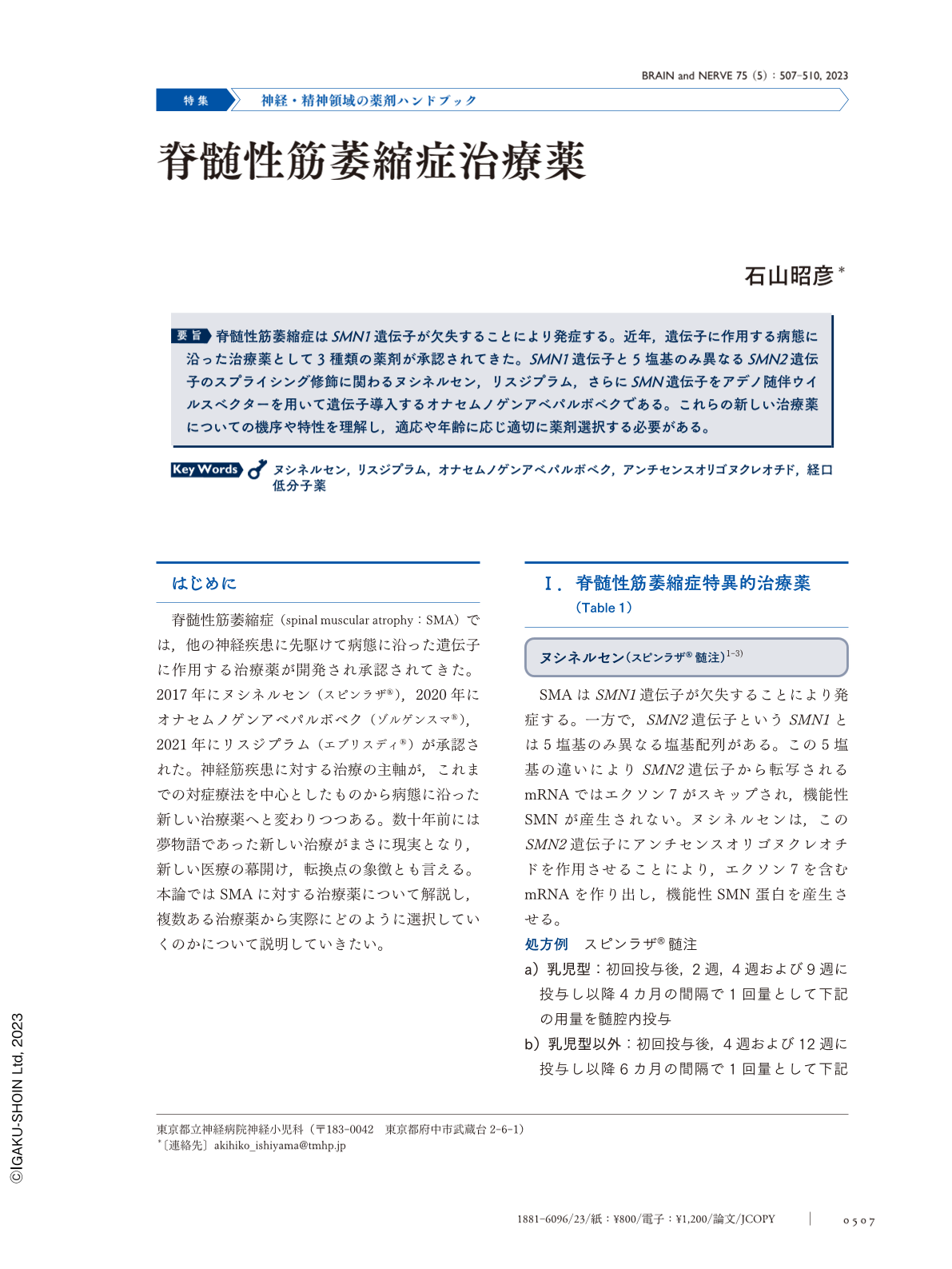Japanese
English
- 有料閲覧
- Abstract 文献概要
- 1ページ目 Look Inside
- 参考文献 Reference
脊髄性筋萎縮症はSMN1遺伝子が欠失することにより発症する。近年,遺伝子に作用する病態に沿った治療薬として3種類の薬剤が承認されてきた。SMN1遺伝子と5塩基のみ異なるSMN2遺伝子のスプライシング修飾に関わるヌシネルセン,リスジプラム,さらにSMN遺伝子をアデノ随伴ウイルスベクターを用いて遺伝子導入するオナセムノゲンアベパルボベクである。これらの新しい治療薬についての機序や特性を理解し,適応や年齢に応じ適切に薬剤選択する必要がある。
Abstract
Spinal muscular atrophy (SMA) is an autosomal recessive neurodegenerative disease that predominantly affects motor neurons, resulting in progressive muscular atrophy and weakness. SMA arises due to insufficient levels of the survival motor neuron (SMN) protein as a result of homozygous disruption of the SMN1 gene. The SMN protein is also produced by the paralogous gene SMN2, but the amount of SMN produced is minimal due to a defect in the splicing process. Nusinersen, an antisense oligonucleotide, and risdiplam, an oral small molecule, have been developed to repair SMN2 splicing failures to facilitate adequate production of the SMN protein. Onasemnogene abeparvovec utilizes a nonreplicating adeno-associated virus 9 to provide a copy of the gene encoding the SMN protein. This therapy has led to a dramatic advancement in SMA treatment. Here, we introduce current treatment strategies for SMA.

Copyright © 2023, Igaku-Shoin Ltd. All rights reserved.


